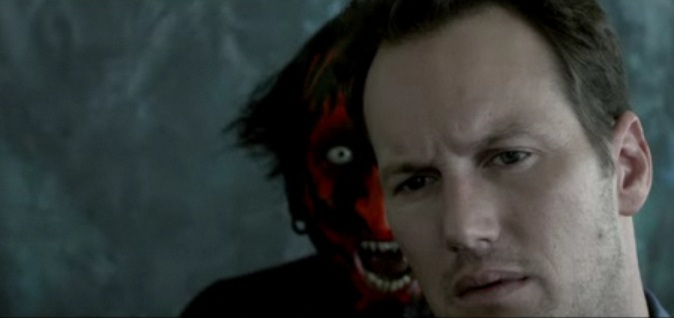
I had several reasons to hate “Insidious” before seeing it. First and foremost, it came from the same writer/director team that created the “Saw” franchise. I tend to think of James Wan and Leigh Whannell as the people who murdered the horror genre for me since they are the architects of the torture porn movement that attempts to call three hours of corn-syrup and Rube Goldberg murder machines a film. Coming from the same directors and the producers of the “Paranormal Activity” films, I wasn’t sure what I was expecting. The minimalist scare tactics and found-film shtick are tiring and uninspiring to me at this point, so mentioning that the film was from the same creators wasn’t giving me any more interest in watching it.
But, I’ll give them this, the filmmaker’s love for the haunted house film is apparent and this affectionate play on the old themes certainly redeems Wan and Whannel. The film pays homage to the classics from the carefully plotted family dynamic, the seemingly clichéd three acts (the initial haunting, the scare from the premises and the final showdown in the other realm), the screeching crescendo of violins pre-scare and the “the end…or is it?” ending.
Patrick Wilson (“Watchmen”) and Rose Byrne (“28 Weeks Later”) lead the cast as the parents of a haunted boy. The first half of the film follows the traditional ‘70s haunted house flick’s build up. There are strategically slow camera movements, eerie violin music and layer after layer of thick tension warning the audience that shit will eventually go down.
Wilson and Byrne make their characters easy to care for and that’s half the battle for a horror film that relies on emotional trauma rather than blunt force trauma. The couple is young, working through the stressful move to a new house while raising three small children and taking care of their own careers. When their oldest son Dalton (Ty Simpkins) slips into an inexplicable coma, the parents’ pain is well-received and sympathized.
There’s time spent with each family member, in the tradition of “The Amityville Horror,” showing how each person is affected by the haunting. Sure, the scares aren’t all that innovative, making use of a baby monitor, a creepy attic and playing on the fear of what’s going on in the corner of your eye, but the actor’s response to the terror sells it. It’s an old story told in the right way.
Another thing the film does right is injecting an odd and subtle humor into the piece; this isn’t a dry and lifeless string of scares. Making it funny made the film more accessible and more fluid. It didn’t take itself too seriously. Many of the second act’s great moments took place when the myth buster-esque ghost busters played by a spectacled Whannel and a scruff-tastic and hilarious Angus Sampson arrived; that’s when the banter and life is introduced. While there’s still a creep-factor, the scenes become so much more organic and entertaining.
This humor is also there in the music. The creepy ukelele song “Tip Toe Thru’ The Tulips With Me” by Tiny Tim plays once in a scene featuring a rambunctious little ghost boy and again in a scene with a fire-faced demon and somehow I still can’t listen to the full song without cringing.
The only thing I could’ve done without was the title and end sequence flashing the word “Insidious” in blood red while blasting some screeching violins. That was kind of unnecessary.
At its best, this film is a modern haunted house story told by the geeks who grew up loving the genre. There’s a lot of love in this movie that never comes off as parody or a rip-off.

